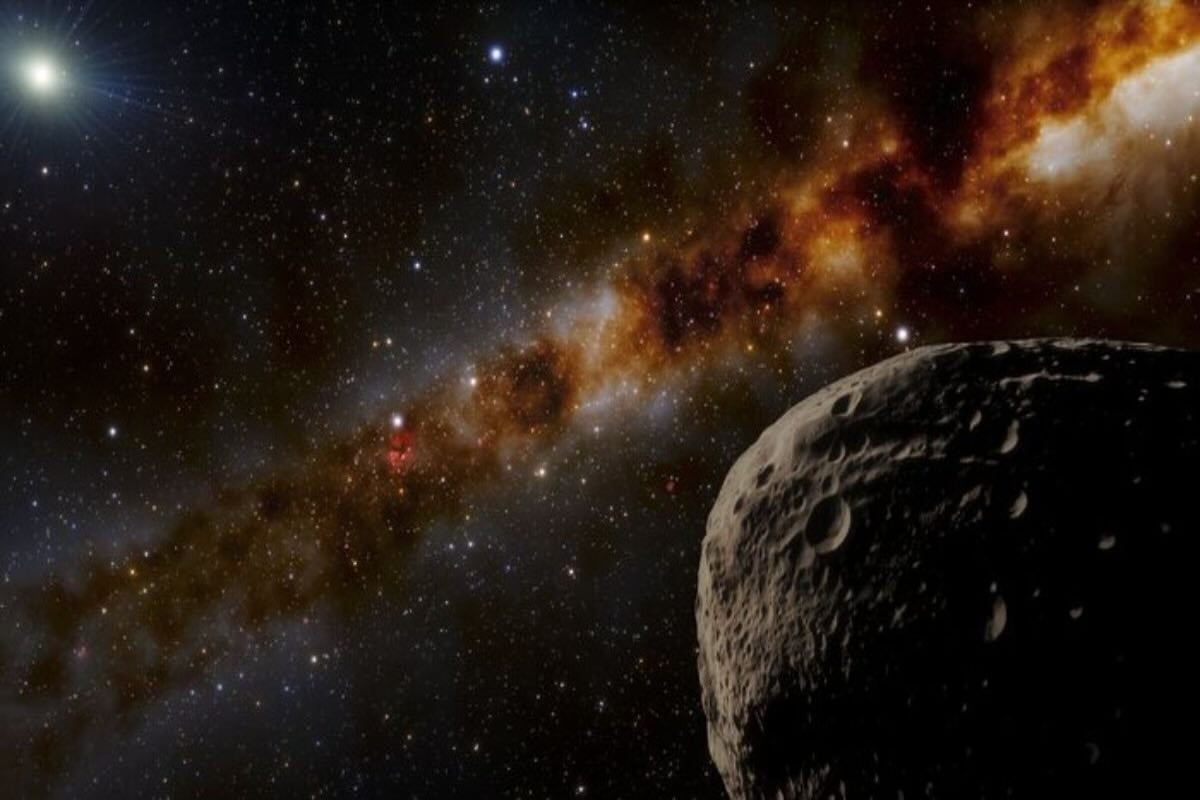NASA has just spotted something strange and incredibly fast. A green-and-yellow object, nicknamed A11pl3Z, is racing through space at 245,000 km/h. What makes it truly fascinating is that it doesn’t behave like anything scientists have seen before. It ignores normal gravitational rules and may even be one of the largest interstellar objects ever detected. Let’s break down what makes A11pl3Z so unique—and why it has astronomers glued to their telescopes.
What Exactly Is a Comet?
Before we get to A11pl3Z, let’s refresh our knowledge of comets. A comet is basically a frozen ball of ice, rock, and dust. When it gets close to the Sun, it heats up, forming a glowing coma and sometimes a long, beautiful tail of gas and dust. Most comets come from the distant Kuiper Belt or the Oort Cloud, far beyond Neptune and Pluto. So the big question is: does A11pl3Z fit into this category—or is it something else entirely?
The Discovery of A11pl3Z
NASA’s ATLAS system picked up A11pl3Z on June 25. Unlike typical comets, this object isn’t orbiting the Sun—it’s flying straight through space on a hyperbolic path. That means it isn’t bound to our solar system. It’s faster than many known asteroids and even speedier than previous interstellar visitors like ʻOumuamua (2017) and 2I/Borisov (2019).
Its journey brings it close to Mars in October and near Earth in December. Don’t worry, though—Earth will be on the opposite side of the Sun, so there’s no danger of impact.
Why Its Behavior Is So Strange
A11pl3Z behaves like an interstellar traveler—something just passing through. Its hyperbolic trajectory confirms it’s not part of our solar system’s regular crowd. But the real puzzle is its identity. What exactly are we looking at?
What Could A11pl3Z Be?
At an estimated 10 to 20 kilometers wide, A11pl3Z could be one of the largest interstellar objects ever found. But here’s the twist: it doesn’t show a visible coma or tail, which are usually comet hallmarks.
- Comet? Possibly—but maybe a faint or inactive one.
- Asteroid? Could be a dark, rocky traveler.
- Unknown? It might be something we’ve never classified before.
ESA scientist Richard Moissl suggests a comet is the most likely explanation, but if it turns out to be something else, it could rewrite what we know about interstellar space.
Other Visitors Before A11pl3Z
This isn’t the first time we’ve had guests from beyond. Two other interstellar objects have been confirmed before:
ʻOumuamua (2017) – Long, flat, and strange. Some even thought it might be artificial.
2I/Borisov (2019) – More like a standard comet but traveling on a hyperbolic path.
Now, A11pl3Z adds a third mystery to the list—and it may be the biggest one yet.
What This Could Mean
Some astronomers believe A11pl3Z is just one of thousands of interstellar objects moving through our solar system unnoticed. Many could be plain rocks, but some might hold organic compounds, sparking questions about the origins of life and how galaxies share materials across space.
If studied closely, A11pl3Z might reveal insights about other solar systems, the early universe, or even how life begins. The possibilities are thrilling.
What Happens Next?
For now, astronomers are carefully tracking its speed, trajectory, and structure. Observatories like the James Webb Space Telescope and the Vera C. Rubin Observatory are gathering as much data as possible. The mystery is far from solved—A11pl3Z could be a comet, an asteroid, or something completely new.
One thing is certain: its arrival reminds us how much of space is still unknown. The universe is full of surprises, and every visitor challenges what we thought we knew about the cosmos.
FAQs
What is A11pl3Z?
A fast-moving interstellar object entering our solar system.
How fast is it moving?
About 245,000 kilometers per hour.
Will it hit Earth?
No. It will pass safely by in December.
Is it a comet or asteroid?
Not confirmed yet—scientists are still debating.
Why is it important?
It may hold clues about interstellar space, other solar systems, and even the origins of life.
A11pl3Z is a reminder that space still holds mysteries beyond our imagination. What do you think it could be—a comet, an asteroid, or something completely new?
